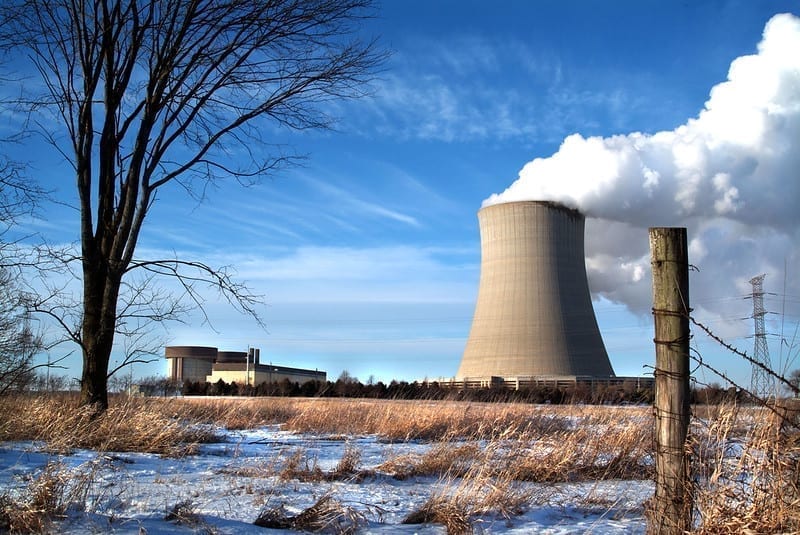Can Nuclear Power Stay Relevant in a World Filled with Renewables?

I have long been a supporter of nuclear power. I'll admit I'm biased, having spent 13 years in the U.S. Navy's nuclear power program and having worked for several more years in the commercial nuclear industry at the Quad Cities station. Even so, when I step back and look critically at nuclear technology, I find it to be a sound form of power generation.
I'm obviously not the only person who believes in it. Several advocacy groups tout the benefits nuclear reactors provide. The Nuclear Innovation Alliance, for example, says the world needs the economic, flexible, secure, zero-carbon energy" that nuclear power offers, suggesting it can be scaled up rapidly to expand energy access while halting climate change." The truth is, however, many nuclear plants are not so economic" and few things happen rapidly" in the nuclear industry.
Financial Challenges and Construction DelaysIt's no secret that nuclear power plants have been struggling in competitive markets. Until recently, Exelon, which operates the largest fleet of commercial reactors in the U.S. (including the plant I previously worked at), was on the verge of retiring its Byron and Dresden facilities because they were uneconomic." The company claimed that despite being among the most efficient and reliable units in the nation's nuclear fleet," Byron and Dresden faced revenue shortfalls in the hundreds of millions of dollars because of declining energy prices and market rules that allow fossil fuel plants to underbid clean resources in the PJM capacity auction."
Byron and Dresden were ultimately saved when legislation was passed by Illinois lawmakers in September. The state's new energy bill will reportedly give Exelon $694 million in incentives to keep the plants open. Similar subsidies have been necessary to keep nuclear plants viable elsewhere, including in Ohio and New York.
When it comes to speed of deployment, there are countless examples of delayed nuclear power projects all over the world. For my purposes, I'll focus on the only project currently in progress in the U.S., that is, the Vogtle expansion in Georgia. Southern Nuclear (a subsidiary of Southern Company) filed for an early site permit application for Vogtle Units 3 and 4 in August 2006. The Georgia Public Service Commission approved construction of the two AP1000 reactors in March 2009. Southern Company notified The Shaw Group and Westinghouse Electric Co. to proceed fully on their engineering, procurement, and construction contract in mid-April 2009.
Original plans called for Vogtle Unit 3 to be operational in 2016 and Unit 4 to enter service in 2017, but that didn't happen. The project has had countless delays, and costs have ballooned. In a July 29-issued press release, Georgia Power, the Southern Company subsidiary that will own 45.7% of the two new units along with Oglethorpe Power Corp. (30%), Municipal Electric Authority of Georgia (22.7%), and Dalton Utilities (1.6%), said it was projecting a Unit 3 in-service date in the second quarter of 2022 and a Unit 4 in-service date in the first quarter of 2023, but even that timeline may be optimistic. In Oglethorpe's investor briefing issued on Aug. 26, the company said its revised budget assumes in-service dates of June 2022 and June 2023 for Unit 3 and Unit 4, respectively."
And speaking of budgets, Georgia Power's capital cost forecast for the project was also revised in July, pegging its share of the project at $9.2 billion. If you do the math, that works out to more than $20.1 billion in total project costs, which is 40% higher than the $14.3 billion projected in August 2008.
Progress on SMRs Has Been Equally SlowSome nuclear power proponents feel small modular reactors (SMRs) could provide a boost to the industry. The concept has been around for decades. I remember hearing about pebble-bed small modular reactors when I was still in the Navy back in the 1990s. The idea of building moduals in a factory-type setting and shipping them to a site for final assembly seems forward-thinking. The process could be more like an assembly line, saving time and money.
Yet, for all the hype, we still haven't seen an SMR approved and constructed in the U.S. NuScale Power is perhaps the furthest along in the process, so I'll focus on what it has accomplished.
POWER has been reporting on NuScale's design since at least early 2013. The company began developing its reactor in 2000 under a Department of Energy-funded research program, and began pre-application discussions with the Nuclear Regulatory Commission (NRC) in 2008. It took until September 2020 for the NRC to finally issue a Standard Design Approval for the NuScale SMR.
While NuScale has signed several agreements with companies and countries interested in exploring SMR deployment, no one has signed on the dotted line to build one. Furthermore, it's highly debatable whether SMR costs will be competitive with other available clean-energy options.
Insurmountable Obstacles?A grim picture was painted for the future of nuclear power during a media event on Sept. 29 to roll out the World Nuclear Industry Status Report 2021," a Mycle Schneider Consulting project that provides an overview of nuclear power plant data including information on operation, production, and construction. One of the takeaways from the presentation was: Nuclear is irrelevant in today's electricity capacity newbuild market."
I asked the eight-member panel of presenters if the tide could be turned. M.V. Ramana, a professor at the University of British Columbia and a contributor to the report, told me in a direct message, I don't think this tide can turn. These problems are structural." I hope he's wrong, because I believe the world needs nuclear power to be a relevant piece of a carbon-free future.
-Aaron Larsonis POWER's executive editor.
The post Can Nuclear Power Stay Relevant in a World Filled with Renewables? appeared first on POWER Magazine.